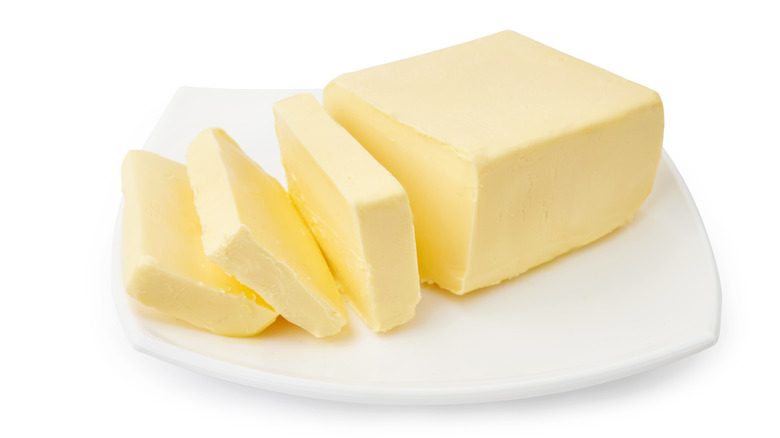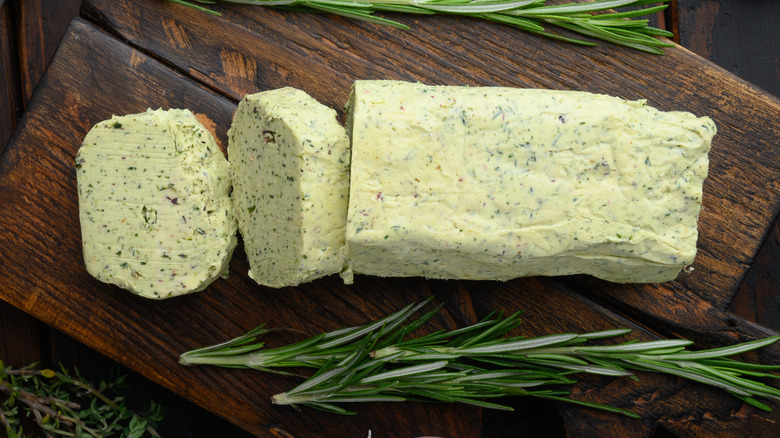The One Type Of Butter The Amish Never Serve
Every chef knows the power of butter. As the Institute of Culinary Education explains, it adds both flavor and richness to whatever recipe you use it in. It can also help with a baked good's texture and rise, creating a perfect final product. There's a reason it's a staple most people who cook or bake with any regularity have in the refrigerator — it's as versatile as it is delicious.
If you've ever tried Amish baked goods or recipes, you might assume that they taste so incredible because of the quality of the ingredients used. However, there's another secret you just might want to incorporate into your own kitchen. According to Taste of Home, a go-to Amish cooking tip is to steer clear of plain butter in most situations.
It may seem a strange tip, considering that Amish butter is some of the best in the game. As Real Simple explains, it's typically slow-churned and made in small batches, with cows that are often pasture-raised. Not to mention, many brands create Amish butter with a butterfat percentage that's on par with some of the best European butter on the market. There's no denying that it's tasty on its own. However, if you're interested in experimenting a bit in the kitchen, it's easy to level up whatever you're making with one easy and endlessly customizable twist.
How to level up your butter
Though high-quality butter spread on freshly-baked bread is a thing of absolute beauty, in many dishes, the flavor of butter can get lost. To add that little something extra that will elevate your dish, consider taking Taste of Home's advice and opting for flavored butter.
In savory dishes (including savory baked goods, such as bread), swap out the plain butter for some herb butter. Sweet treats will benefit from swaps for grape butter or apple butter, an Amish staple. Now, it's worth noting that this won't apply to every recipe — you can't just interchangeably use a flavored butter in place of regular butter. However, particularly in cases where the butter is an accent, spread atop some freshly-baked bread or a muffin, it can add that extra layer of flavor to make your baked goods stand out.
And if you're interested in whipping up a homemade batch of flavored butter, it couldn't be easier. In most cases, it simply involves whipping the butter and mixing in the additions you want to incorporate before refrigerating it until it solidifies again.
The Pioneer Woman shares six different compound butter recipes, from a smoked paprika and rosemary butter that would work with cooked proteins or grilled vegetables to an orange honey butter that would be the ideal citrus-packed accompaniment to your morning toast. However, you can be as creative as you want.

